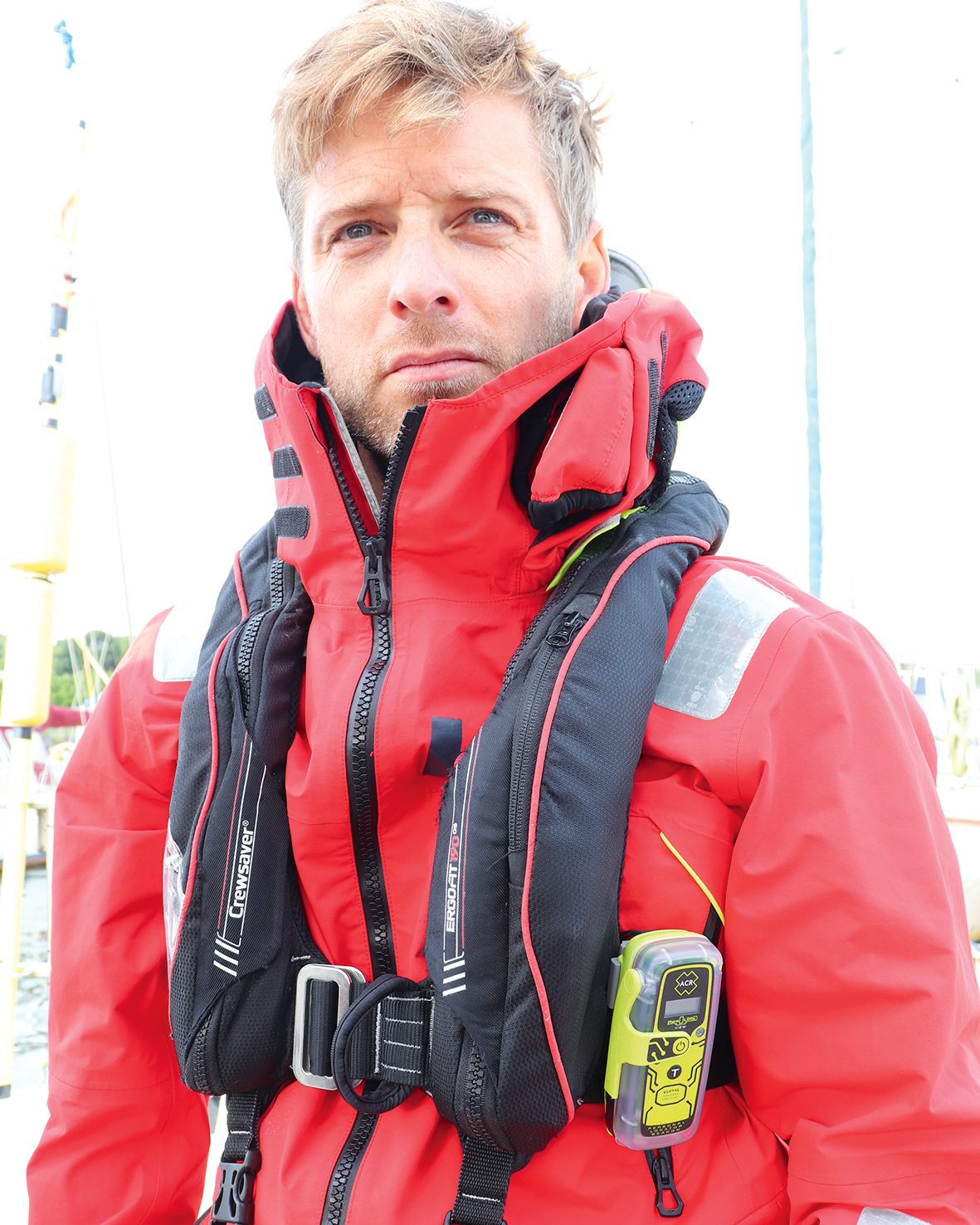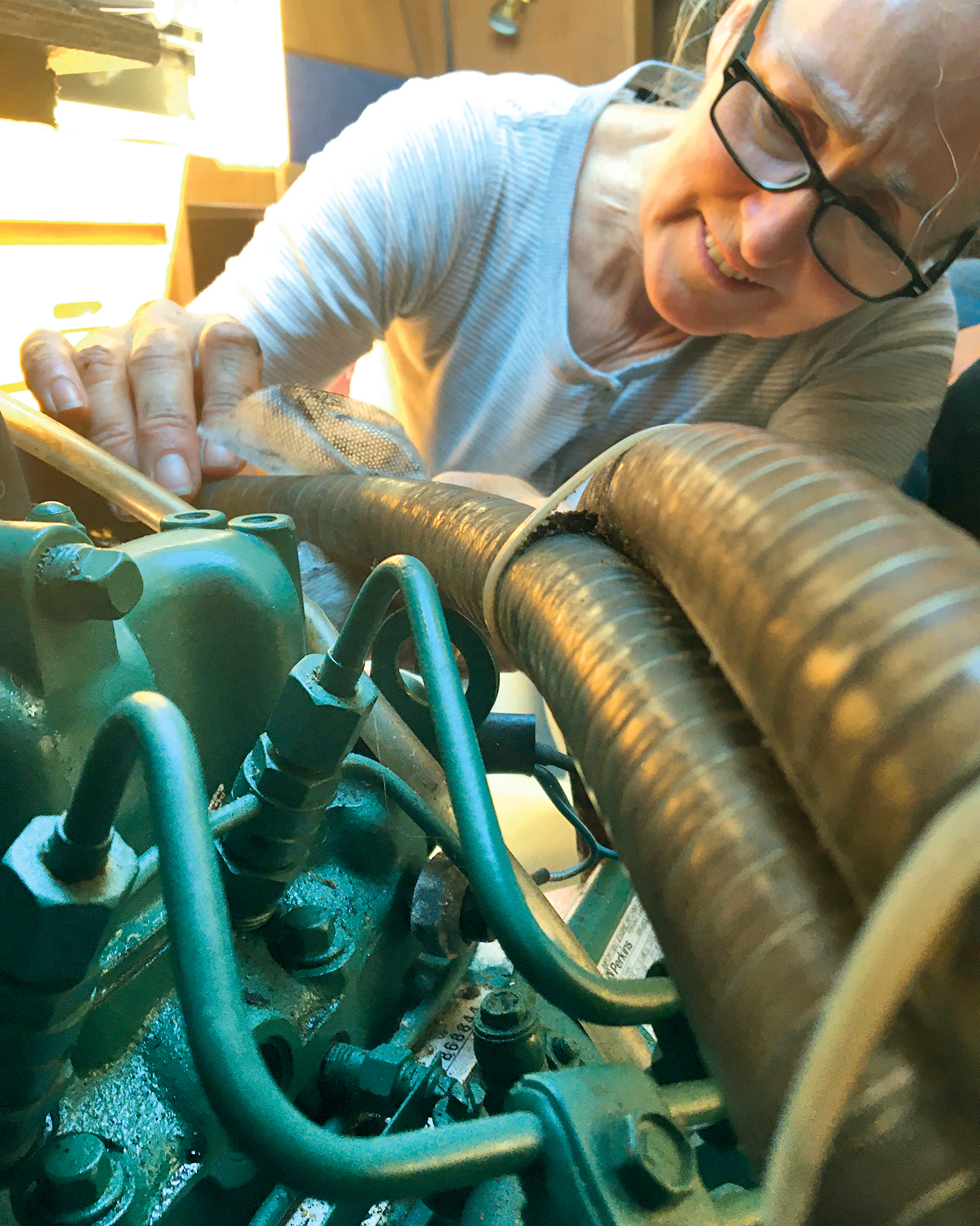Enjoy the water with safety in mind
When did you last check and service your lifejacket or update your emergency action plan? If you were to fall overboard would your crew know how to turn the boat around?
It’s easy to become complacent the more sea miles you tick off, but now’s a good time to refresh your knowledge ahead of the new season. Safety kit is always changing, and best practice does too, which is why the Maritime and Coastguard Agency (MCA) has teamed up with the Royal National Lifeboat Institution (RNLI) and Royal Yachting Association (RYA) to launch the new recreational boating safety campaign, ‘Reduce the risk, boost your skills’.
Whether you’re a new sailor, or a seasoned cruiser, here are some of the things to think about to minimise worries and maximise your fun on the water.
Personal flotation devices
A personal flotation device (PFD) can save your life, and while all lifejackets need to meet ISO standards they differ in design when it comes to crotch straps, oral inflation tube, lifting strop, sprayhood, light and CO2 bottle. Depending on the risk level of your activity – if sailing solo or offshore, for example – you may want to research advanced features such as ‘back-tow’ technology, where a tethered man overboard (MOB) is dragged in a seating position, or whether your lifejacket has the option to fit a personal locator beacon (PLB) and/or automatic identification system (AIS) beacon.

Service lifejackets once a year for peace of mind
Try a few styles before you buy. You might think comfort is irrelevant for an item that can save your life, but if a bulky or ill-fitting lifejacket means it’s more likely to stay in the locker, then it’s no use at all. Automatic inflation lifejackets are available in all sizes for children over 15kg and adults. Be sure to service yours annually as a corroded gas bottle or fitting could result in tragic failure.
Of course, the safest option is to prevent yourself from separating from your vessel when overboard. Some vessels come with a jackstay or attachment point. If your lifejacket has a D-ring fitting, you can use this to harness yourself or passengers to the vessel. If your cockpit doesn’t have these, consult a shipwright; they can always be retrofitted.
MOB alert and recovery
Falling overboard is every sailor’s worst nightmare, but there are many items on the market to assist with recovery. Sea dye, LED strobe lights, horseshoe buoys and danbuoys help mark your position in the water while throwlines, emergency ladders and recovery systems will help you get back on board (See MGN 544, sections 5 and 6 for non-mandatory Guidance for Recovery Equipment on Non-SOLAS Vessels).
You can buy tags for people and pets which trigger an MOB alarm on the boat and people’s phones when the wearer becomes separated. A more expensive but robust option is a PLB (personal locator beacon). This will send a distress message and your GPS position to His Majesty’s Coastguard (HMCG), part of the MCA, while a personal AIS beacon will send an alert to boats with AIS receivers within a two- to four-mile radius. Your position will flash up on their chartplotter so they can come to your aid. Distress signalling technology is evolving quickly, and there are even devices now that combine PLB and AIS functionalities.

The MOB2 is the smallest personal locator beacon. Photo: Ocean Signal
EPIRBs and flares
An EPIRB (emergency position-indicating radio beacon) can be mounted on a bulkhead. Activated by water (for example, if the vessel sinks), or manually by the ‘on’ switch, this sends a continuous maritime distress signal to a search and rescue centre for 48 hours or longer.
For offshore passages, where you’re likely to be out of radio contact with other vessels, many sailors carry a satellite phone or tracking/texting device, which requires a monthly subscription. For more on satellite communications see pbo.co.uk/satcomms
Electronic visual distress flares (EVDs) are not an internationally recognised means of distress signalling, but are sometimes carried by sailors as an alternative to handheld pyrotechnics, which must be disposed of at certified disposal service providers. Starting at less than £100 these multi-use, rechargeable LED flares are easy to carry and could save your life. Note, however, that EVDs are not listed as a distress alerting device in the international code of signals for preventing collisions at sea (COLREGs).

Pre-season checks will enable a safer journey.
Is your boat seaworthy?
PBO regularly updates its pre-season checklist, and though it can feel daunting ticking off so many boxes, once you’ve done it, it becomes easier year after year. Free MCA/ RNLI/ RYA checklists are also available to order at: hmcoastguard.uk/boatingchecklists
Has your engine been serviced and are your tanks free of diesel bug? Are your electronics working and are your batteries charging OK? If you removed any hoses over winter, check these are now reattached and double clipped, and that your seacocks are closed but accessible with safety bungs nearby.
Check your sails, anchor and rig for wear and tear, and book in repairs if needs be. Is your tender intact and your outboard working? These are just a few things to pay attention to before you get back on the water.
Emergency plans
When you’re happy your boat and crew are safely equipped, it’s time to look at boat rules and emergency drills. Your crew or family might roll their eyes but remind them you’re all responsible for one another’s safety. If you’re on a motorboat with an outboard engine, reiterate the importance of the kill cord.
Ensure they know the MOB drill, how to call for help, where the first aid kit is, what to do in case of a fire, and other ‘boat rules’, which might include switching the gas off at the bottle, clipping on outside of the cockpit, using a preventer downwind; nothing is trivial. Write them down if you like, or share them with crew before a voyage. You could even ask them to contribute.

Keep a laminated note on Mayday protocol nearby./ Photo: ICOM
Boost your skills
If there are gaps in yours or your crew’s knowledge, perhaps consider an RYA course such as Day Skipper, Level 2 Powerboat or something shorebased such as Essential Navigation and Seamanship. The more knowledge you acquire, the more confident you’ll be. Or if you’re just a bit rusty, ask your local RYA centre if they run any refresher courses.
Passage plan
Always carry a fully charged mobile phone and have a passage plan. Read up on the weather and tides before you leave the dock. Be prepared to turn around or abort a trip, even if it will cause disruption or disappointment.
There are many navigation apps available for phones and tablets but bear in mind you may not be able to see your screen in bright sunlight and mobile reception can be patchy.
A chartplotter/multi-function display will be daylight viewable, but what’s your backup if you lose power? This is where your pilot books, paper charts and passage plan come in. Hopefully, you’ll have been plotting your position throughout the trip.

Satelite comms are useful if you are going to be offshore
Calling for help
It’s crucial to be able to raise the alert from your vessel. Cruising boats will most likely have a fixed VHF radio, but even dayboats should carry a handheld VHF with spare batteries. Handhelds these days have similar features as fixed sets, including frequency scanning, weather reports, GPS integration and the ability to send automatic distress signals via the Digital Selective Calling (DSC) emergency button. It’s a good idea to mount a laminated note by the radio or chart table with the vessel’s call sign and MMSI, reminding crew how to do a Mayday.
Like the police, fire and ambulance, HMCG is an emergency service with the same 999 number. While your mobile might work at sea, the benefit of using the DSC button on your radio is that it will automatically give your distress position. If you don’t have that option, you should make a Mayday call to the Coastguard on VHF Ch16.
The Coastguard will decide the best way to get help to you, whether that’s tasking assets which could include RNLI or independent lifeboats, Coastguard rescue teams and search and rescue helicopters. For non-dangerous situations, you should contact organisations such as Sea Start that can fix your engine at sea or tow you to safety.

Comfortable lifejackets are more likely to be worn
Shore contact
Think about registering your boat on the RYA SafeTrx website (safetrx.rya.org.uk) or downloading the app. It is wise to leave details of your passage with family or friends. If you are late returning, they can raise the alarm by calling 999 and asking for the Coastguard.
Download and order your free checklists: hmcoastguard.uk/boatingchecklists




